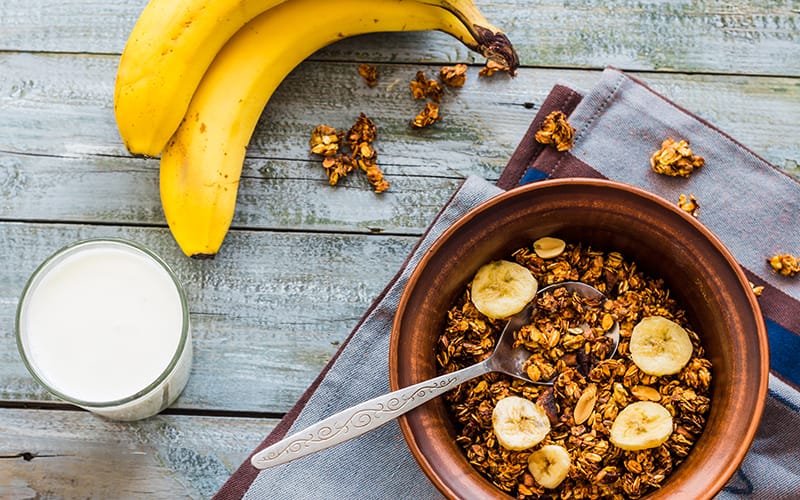The Simplicity of Great Recovery
by Will Kirousis
In sports, athletes often focus on the amazing workouts they can perform and cutting-edge strategies they can apply. That’s great! Work is a big part of the improvement equation. Without recovery, though, it’s difficult to adapt to the training you are doing and become stronger.
Many high-impact recovery solutions are surprisingly obvious or surprisingly simple, unlike the “latest and greatest” recovery tools and techniques often found on social media. Let’s look at some of these hidden basics that’ll help you get more out of your training this winter and the coming triathlon season!
 Openly review your life situation and acknowledge the true time you spend on everything you want and need to do. Those wants and needs take up a lot of time: spending time with family/friends, doing a good job at work, doing hobbies beyond sport and more. If you eliminate those to get in every possible second of training (or recovery), you will not recover well. You will be on the fast track to burnout.
Openly review your life situation and acknowledge the true time you spend on everything you want and need to do. Those wants and needs take up a lot of time: spending time with family/friends, doing a good job at work, doing hobbies beyond sport and more. If you eliminate those to get in every possible second of training (or recovery), you will not recover well. You will be on the fast track to burnout.
Balance in life is not a daily or even weekly phenomenon. The order of priority for work, family and hobbies will shift over time. That’s good! You should enjoy your life. When you pack every second with training, there is no time for anything else. Pressure builds, chores get ignored, relationships become challenging and stress increases. If we are completely tapped, no amount of recovery tools or nutrition strategies will help you grow best.
So, to recover better, write out what you hope to experience in sport and in life. How much time do you need for commuting, work, food prep, chores, family/friends, relationships, hobbies, etc.? Examine that closely. Can you accept cutting back on some non-sport things to properly train for a specific event or goal? Could you reduce training at various times during the year to better manage non-sport issues and sustain an enjoyable balance over the long haul? Even with longer distance races, the way to get the best out of yourself is not to do the most you could, but the most you can.
Sleep impacts performance a lot! Many of our bodies’ processes to build us up and become stronger take place during sleep. Athletes who are low on sleep have a tougher time with everything from focus to fine motor skills. In some research, low sleep relates to higher odds of injury. Getting to bed at the same time nightly – preferably by 10 p.m. for those who begin work around 9 a.m. – and shooting for 7-8 hours per night on average ensures the most restorative nREM sleep cycles.
Sleep hygiene can also be a major help with your recovery/performance over the long haul. Ways to improve your sleep hygiene are:
- Create and maintain a consistent bedtime routine.
- Minimize exposure to blue light at night – no cell phone/tablet/computer/TV for an hour prior to bed.
- Decrease light brightness before bed. Use just enough light to do what you need to (or to read, a great relaxing activity).
- Turn your alarm clock so it’s not facing you while in bed. This creates greater darkness.
- Consider light background noise like a fan or fan-based humidifier.
- Keep your sleeping space cool and as dark as possible.
In my 23 years as a coach, I’ve frequently had new athletes come to me who describe underperformance or chronic fatigue. Most of them had a diet deficient in total energy (calories, essentially) , particularly carbohydrates. Our body relies on a mix of fuels to perform their best. Without enough energy, athletes do not recover as well or execute workouts to the best of their ability. Getting adequate energy, including enough carbs, improves your performance. Generally, this translates to about 1.2-2g/kg of protein and 3-12g/kg of carbohydrates (low end when training low volumes, high end when training very high volumes). Additionally, fats should account for at least 20% of total daily energy consumed.
To fine-tune your diet, I strongly suggest consulting a sports nutritionist. This can take away the mystery and help make good nutrition fun and enjoyable for you!
 If you are only training an hour most days, water is all you really need during workouts. Your diet will supply the necessary energy; adding fuel to the mix is not necessary.
If you are only training an hour most days, water is all you really need during workouts. Your diet will supply the necessary energy; adding fuel to the mix is not necessary.
As workout durations climb, especially if training load (duration and intensity) increases, fueling during a workout enhances execution and recovery. It also helps improve your GI system’s ability to handle fuel during races. Sports scientist Asker Jeukendrup gives us a good starting point for fueling:
Growing research suggests up to 120 grams of carbohydrates per hour can be very helpful, especially in longer events. Amounts that large require time to train your GI system so the odds of GI distress decrease. Practice your race-day fueling strategy during your long workouts so you know what works best (and worst) for you.
What types of carbs should you take on during workouts? Ideally, mixed sugars (different types of sugars, like fructose and glucose and/or maltodextrin, for example). Different sugars get through the gut on different pathways and provide a more energy than a single sugar alone. Mixed sugars come in several forms: gels, drinks, blocks, bars, fruit, dry fruit, peanut butter and jelly sandwiches… all these and more can work. The best ones are whatever you’ll be able to consume frequently and consistently. Also, try many different approaches so you’ll be adaptable to using almost anything. Adaptable athletes have the greatest odds of success when things go haywire on race day.
By staying well fueled, you recover quicker between and within workouts, maximizing your performance!
In endurance sports, it’s easy to think training every day will provide the most improvement. That’s only true if you have the downtime to recover. It feels counterintuitive but giving yourself one or two days off each week can make a huge difference in your long-term progress. This can be planned into your training or determined on the fly.
A great example of success while taking multiple rest days comes from Swedish speed skater Nils van der Poel. Van der Poel won gold at the 2022 Beijing Olympics at both the 5K and 10K distances while taking Saturdays and Sundays off from training. Yes, he trained some giant volumes during the week, but he used his weekends to enjoy time with friends and do other things. Nils is a great example of how even world-record holders use rest days to help themselves.
For busy professionals, having both a planned and floating off day is a good tool. To determine whether an extra rest day may be good, ask yourself a few basic questions:
Answer those questions most days and notice any patterns that emerge. You’ll recognize that on days where you answer yes to at least two, taking a day off generally leads to better recovery and long-term performance.
Taking 2-4 Weeks Off in the Offseason
This one is easy to overlook. We finish a season, and we are driven to improve on perceived weaknesses. With no race on the horizon, it can be tempting to start immediately. Instead, set aside that motivation and hang your gear up. No tri related activities for a bit. A short hike here and there, some walks during the week and recreational fun are fine. But overall, this is time to visit friends/family, enjoy non-sport activities you like, and catch up on the books or tv shows you’ve been putting off. Taking a rest period is a vital part of your training year!
While training, it’s easy to look at our plans and feel like a missed day or moved workout means we’re blowing it. Yes, plans help set the trajectory you take towards your goals, but adaptation along the way creates your best long-term progress. Training is a year-long process (or longer). If you skip a workout occasionally or move things around during the week, sure, it may not be textbook ideal, but it may be real-world ideal, for you, right then. Real-world ideal provides greater long-term consistency, lower odds of burnout and will yield better performance.
The concepts noted here are not what many may think of when reading an article about recovery. When you incorporate these broad concepts into your training, you are setting yourself up for long-term success. You reduce fatigue and lower your chances of experiencing burnout. By fostering this patient approach to training, you foster recovery from its roots.
Train well, rest well, perform well!
Will Kirousis has presented and written for national and international organizations on endurance training and has been coaching triathletes and other endurance athletes for over 20 years. He’s been fortunate to help athletes achieve a range of goals, from finishing their first triathlon to winning age group national and world championships as well as professional national championships. You can learn more about Will at www.tri-hard.com or by following him on twitter @willkirousis.